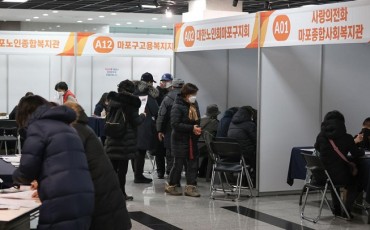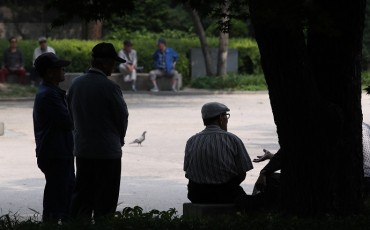
Senior citizens are often left out of the labor market and they cannot guarantee income in a stable manner, which means that economic instability persists. (image: Korea Bizwire)
SEOUL, Mar. 25 (Korea Bizwire) — South Koreans’ perception of “well-being” improved slightly last year, but things were different for those in their 50s and 60s.
Those excluded from the labor market and the community were more depressed than other age groups, and their satisfaction with life itself and income levels was also lower.
As a result, some advise that the government increase social activities for senior citizens and help them escape economic anxiety by increasing the number of welfare services that take into account their mental health beyond physical care.
According to a report released by Statistics Korea on March 22, the “satisfaction with life” felt by all Koreans last year was 6.1 out of 10, up 0.1 points from 6.0 a year ago.
“Being happy” also scored 6.6 points, an improvement from 6.5 the previous year.
During the same period, “Being concerned” fell from 3.9 points to 3.7 points, and “Feeling depressed” fell from 3.2 points to 2.9 points, showing contrasting signs.
However, there were differences in perception among different age groups.
In terms of satisfaction with life, those in their 30s and 40s were the happiest, with an average score of 6.2 points, followed by those in their 20s with 6.1 points and those in their 50s with 6.1 points.
The satisfaction level for those in their 60s was only 5.9 points.
The happiness index was high at 6.7 points for both teens and those in their 40s, but was also relatively low for those in their 50s and 60s at 6.6 points and 6.5 points, respectively.
On the other hand, people in their 50s and 60s scored 3.0 points, showing the highest depression.
Depression was the lowest with 2.8 points for those in their 30s, compared to 2.9 points for those in their 20s and 40s.
According to the survey by Statistics Korea, the satisfaction level for “income” was the lowest among the overall aspects of life, such as family relations, school life, health assessment, working and living conditions, income, consumption life, social safety awareness and satisfaction with leisure activity.
According to Prof. Hur Jun-soo of Soongsil University, senior citizens 67 or 68 years old showed the highest level of easing out of the labor market, but they often work part-time and as non-regular workers.
Senior citizens are often left out of the labor market and they cannot guarantee income in a stable manner, which means that economic instability persists.
The fact that family is breaking up rapidly, with the number of single-person households increasing among those in their 50s, is further accelerating social isolation.
South Korea entered an aging society in 2000, with the proportion of elderly people aged 65 or older exceeding 7 percent. Since then, the ratio passed 14 percent in 2017, and South Korea entered an aged society.
When the entire population is lined up in a single line, the median age, which stands at the center of the population, has also risen from 42.6 years old every year since 2000.
If senior citizens were economically stable, they would participate in activities at cultural centers, but the underprivileged are now even losing their purpose as a citizen in the community.
Experts suggest there should be an integrated public welfare system that addresses both the mental and physical difficulties of the elderly.
D. M. Park (dmpark@koreabizwire.com)






